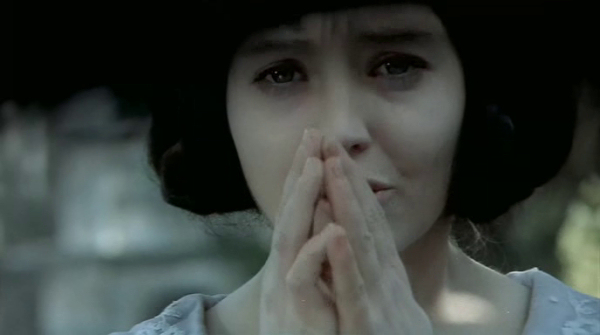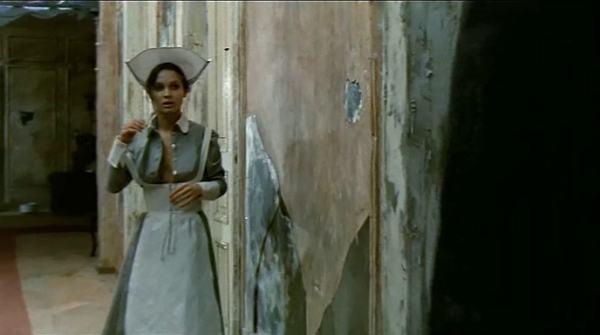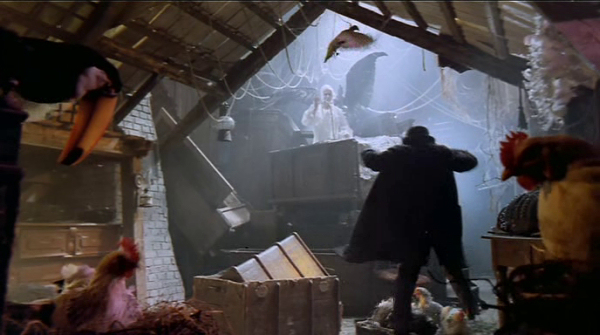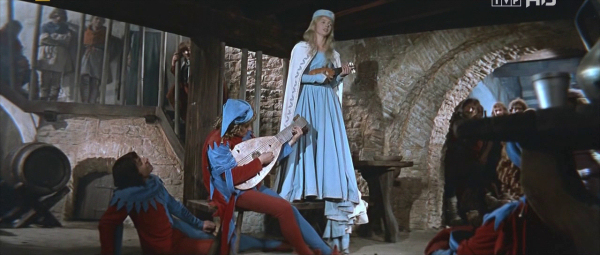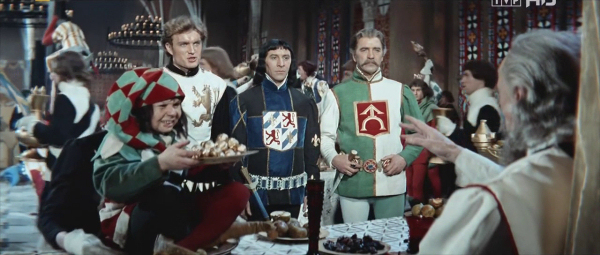
One of the hazards of writing about, or making a film about, a horrible experience that you never actually experienced yourself is allowing too much of your feelings as an outsider to influence the behaviour of the characters. This is the central flaw in 2013's 12 Years a Slave, a film lauded for its authentic portrayal of slavery that is yet almost exclusively filled with people who would have been abnormal for the time and place. It's nicely but academically shot and features some good though overenthusiastic performances.
I like Michael Fassbender a lot, particularly in the films he's made with Ridley Scott, but in 12 Years a Slave he goes to late career Al Pacino levels of ham as the plantation owner Edwin Epps. A man, we're told, with a reputation for breaking slaves. I suspect the real life counterpart of Epps was not in the habit of constantly putting his arm around a slave's shoulders and laughing or crying.

This is the sort of thing an actor does when he gets carried away, though, and director Steve McQueen, whose film Shame delivered a no-holds-barred performance from Fassbender as a self-loathing sex addict, is the sort of director who would encourage this kind of performance from an actor.
12 Years a Slave is based on a real, 1853 slave narrative by Solomon Northup, a free man who was kidnapped and forced into slavery for twelve years. Chiwetel Ejiofor stars as Northup who was a musician, an artist, which may be the justification for the ease with which Ejiofor portrays Northup expressing his anguish. I haven't read Northup's book but one of the important things I've noticed in the slave narratives I have read is how they render the normalcy of society built around the institution of slavery. The amazing thing about Frederick Douglass' accounts is that he possessed the imagination required to break his perceptions out of the reality imposed on slaves for them to dwell in throughout their lives. He recognised that the crime of slavery was bigger than the extravagant acts of violence like whipping or even the gruelling physical labour. It was a system that repressed even the cognisance in the slaves of the rights they were being denied.

We don't get to know any slaves like that in Steve McQueen's film. All the slaves Northup interacts with seem like people from 2013 who were pulled back in time and put in slavery. Every one of them seems shocked at the basic injustices of the system that had been in place for hundreds of years. There are slaves in the background who seem like they might have been born into the life but Northup, for all the time he spends with them, never once has a dialogue that shows the differences in world perception between someone who grew up free and someone who grew up a slave.

Benedict Cumberbatch as William Ford, the first plantation owner to whom Northup is sold, gives one of the few restrained performances in the film but unfortunately he's not in the movie for very long. Most of the performances in the film, like McQueen's direction, seem too caught up in feelings about the thesis to present the argument or the story.

Like I said, the film is nicely shot, with some lovely shots of Louisiana wilderness. But there is a distracting cleanliness to it. Something Terry Gilliam is fond of complaining about in period films is present here--everyone has perfect teeth.

Everyone has better teeth than the average adult to-day. Certainly better than my teeth. Applying a little discolouration doesn't seem like it would have been difficult.
Aside from whip scars, everyone has perfect skin, clothes rarely have stains, the floors and walls are usually spotless. It's like the JC Penney catalogue version of the old South.

Apparently two Academy voters have anonymously admitted they voted for 12 Years a Slave for Best Picture without actually seeing the film. That's just the two who admitted it--I'm not sure I'd blame it on the particular content of the film. I suspect this sort of thing happens quite a lot, it's hardly a revelation at this point to say the Oscar voting is primarily motivated by politics. But I can almost guarantee you at least twice as many voters saw Django Unchained.
In interviews, Steve McQueen has mentioned more than once, "The second world war lasted five years and there are hundreds and hundreds of films about the second world war and the Holocaust. Slavery lasted 400 years and there are less than 20. We have to redress that balance and look at that time in history."
Well, that was exactly the line on Django Unchained, both from Tarantino and his detractors, like Spike Lee, in discussing the film. Germany constantly has to face the Holocaust in film but the U.S. almost never has to face the reality of slavery as it existed in the U.S.
Somewhere in the political superbrain, Hollywood said, "Oh, shit, we need a Django Unchained that isn't weird." And so 12 Years a Slave happened. Mind you, it may have been somewhere in the pipeline before Django. But there are thousands of films in the pipeline that have no chance of ever getting made. 12 Years a Slave owes its existence, and its Oscar, to Tarantino's film.




